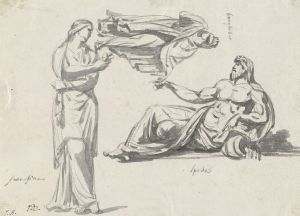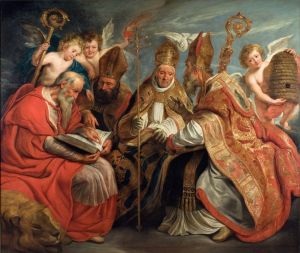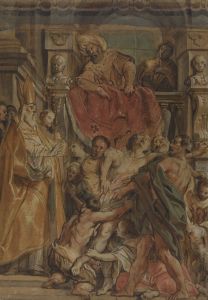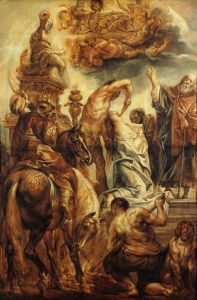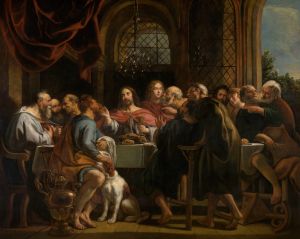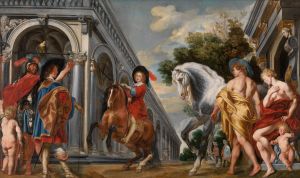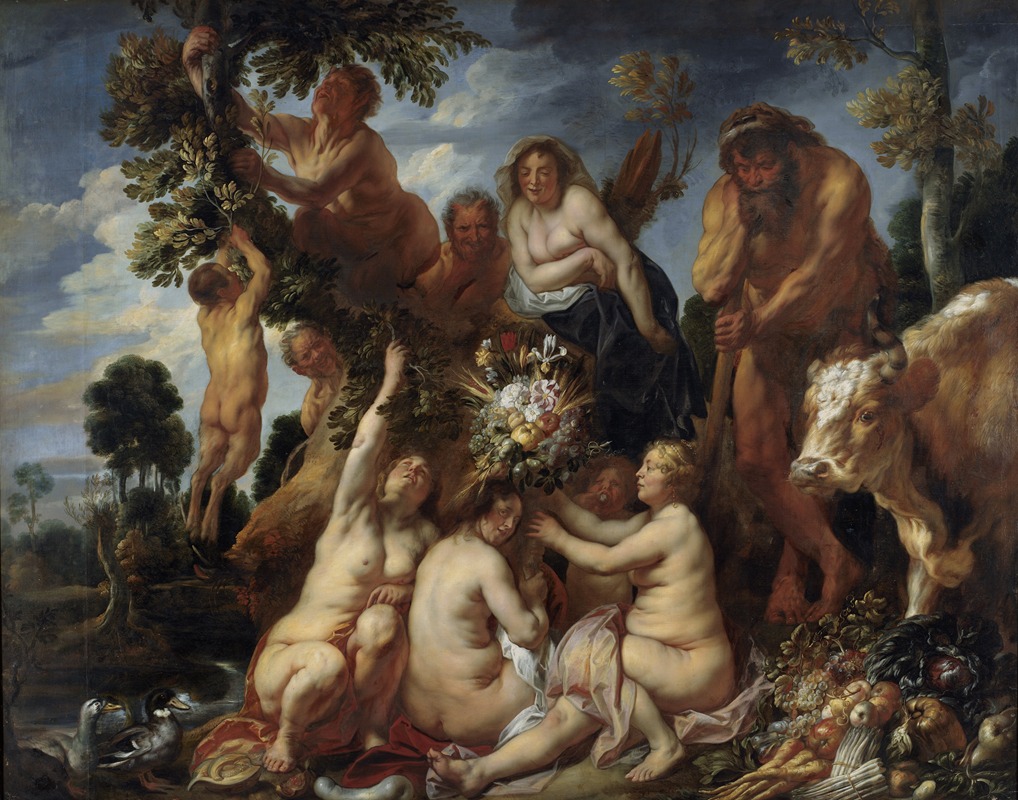
Achelous Defeated by Hercules. The Origin of the Cornucopia.
A hand-painted replica of Jacob Jordaens’s masterpiece Achelous Defeated by Hercules. The Origin of the Cornucopia., meticulously crafted by professional artists to capture the true essence of the original. Each piece is created with museum-quality canvas and rare mineral pigments, carefully painted by experienced artists with delicate brushstrokes and rich, layered colors to perfectly recreate the texture of the original artwork. Unlike machine-printed reproductions, this hand-painted version brings the painting to life, infused with the artist’s emotions and skill in every stroke. Whether for personal collection or home decoration, it instantly elevates the artistic atmosphere of any space.
"Achelous Defeated by Hercules. The Origin of the Cornucopia." is a painting by the Flemish Baroque artist Jacob Jordaens, created around 1615-1620. Jordaens, who was born in 1593 and died in 1678, was one of the leading painters of his time, known for his vibrant use of color and dynamic compositions. This particular work is a fine example of his ability to depict mythological subjects with dramatic intensity and rich detail.
The painting illustrates a scene from classical mythology, specifically the story of Hercules and Achelous. According to the myth, Achelous, the river god, competed with Hercules for the hand of Deianira. During their struggle, Achelous transformed himself into a bull to gain an advantage. However, Hercules, known for his immense strength and heroic feats, managed to defeat Achelous by breaking off one of his horns. This broken horn was then transformed into the cornucopia, or the "horn of plenty," which became a symbol of abundance and nourishment.
In Jordaens' depiction, Hercules is shown in a powerful stance, subduing the bull-headed Achelous. The painting captures the moment of victory, with Hercules holding the broken horn, which is often depicted overflowing with fruits and flowers, symbolizing the cornucopia. The composition is dynamic, with the figures arranged in a way that conveys movement and tension. Jordaens' use of light and shadow enhances the dramatic effect, highlighting the muscular form of Hercules and the contorted body of Achelous.
The painting is notable for its vivid colors and detailed rendering of textures, from the sheen of Hercules' skin to the fur of the bull. Jordaens' skill in portraying human anatomy and his ability to convey emotion through facial expressions and body language are evident in this work. The background, though less detailed, provides a sense of depth and context, suggesting a natural setting for the mythological encounter.
"Achelous Defeated by Hercules. The Origin of the Cornucopia." reflects Jordaens' interest in classical themes and his ability to bring them to life with his distinctive style. The painting is part of the collection of the Museo del Prado in Madrid, Spain, where it continues to be admired for its artistic excellence and its portrayal of a timeless mythological story.
Jordaens' work, including this painting, is often compared to that of his contemporaries, such as Peter Paul Rubens and Anthony van Dyck. While Jordaens was influenced by Rubens, his approach to composition and color was uniquely his own, contributing to his reputation as one of the foremost artists of the Flemish Baroque period.





